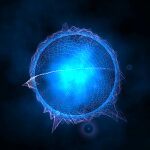Link to Pubmed [PMID] – 25755835
Am J Transl Res 2015;7(1):128-38
Activation of the calcium-sensing receptor (CaSR) by ischemia/reperfusion (I/R) favours apoptosis in cardiomyocytes, hepatocytes and neurons. Its role in renal I/R is unknown. We investigated the impact of pharmacological preactivation of the CaSR on kidney structure and function in a murine model of bilateral renal 30-min ischemia and 48-hour reperfusion, and in a 6-year cohort of kidney transplant recipients (KTR). C57BL/6J mice were administered daily with CaSR agonist, R-568, or with vehicle for 48 hours. Evaluation of serum urea and creatinine levels, renal histology and urine metabolome by nuclear magnetic resonance showed that R-568 was not nephrotoxic per se. Following I/R, serum urea and creatinine levels increased higher in R-568-treated animals than in controls. Jablonski’s score was significantly greater in R-568-treated kidneys, which showed a higher rate of cell proliferation and apoptosis in comparison to controls. Next, we retrospectively identified 36 patients (10.7% of our cohort) who were treated by CaSR agonist, cinacalcet, at the time of kidney transplantation (KTx). After matching these to 61 KTR upon type of donor, cold ischemic time, residual diuresis, and donor age, we observed that delayed graft function, i.e. need for dialysis in the first week after KTx, occurred in 42 and 23% of cinacalcet-treated and control groups, respectively (p≤0.05). These data suggest that pharmacological preactivation of the CaSR before renal I/R exacerbates kidney injury.

